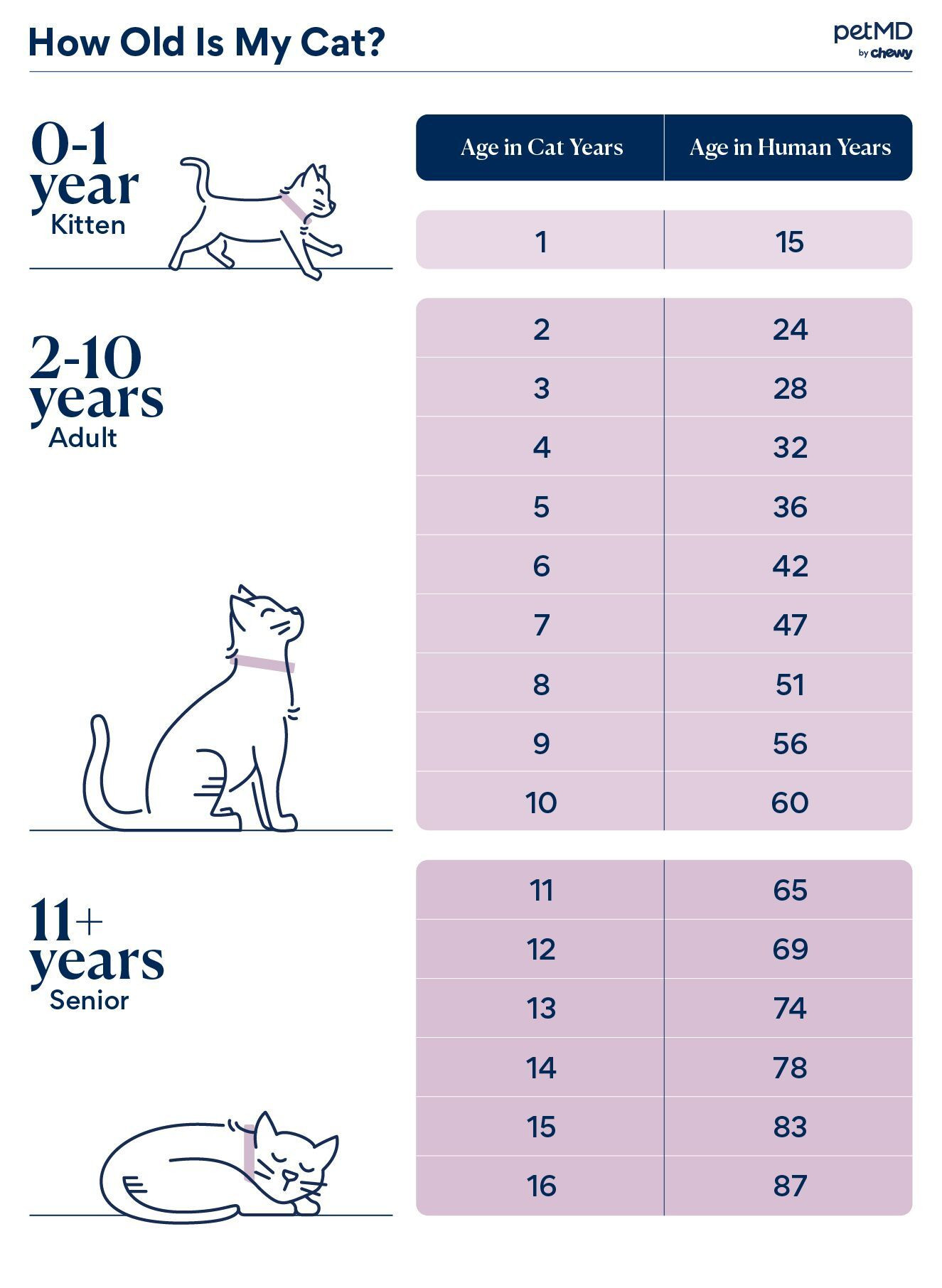Cat owners adore celebrating their feline friends’ birthdays, recognizing them as cherished family members. However, a yearly celebration might not perfectly align with a cat’s unique aging process, which evolves throughout their lives. Understanding how cat years translate to human years provides valuable insights into your cat’s life stages.
“Converting cat years to human years allows us to better understand our cat’s aging journey in relation to our own,” explains Dr. Mary Gardner, DVM, a veterinarian and co-founder of Lap of Love Veterinary Hospice. “Just as we might experience mobility challenges in our senior years, a cat aged 11 or older—equivalent to 60 human years—could face similar experiences.”
So, how can you accurately calculate your cat’s age in human years? It’s not as simple as multiplying by seven!
Decoding Cat Years: Beyond the Myth of 7 Human Years
The common belief that one cat year equals seven human years is a simplification. According to the American Veterinary Medical Association (AVMA), cats actually age more rapidly in their early years. A cat reaches the equivalent of 15 human years within their first year of life. By their second year, they’re approximately 24 in human years. After these initial rapid years, a cat’s aging pace slows down to about four human years for each subsequent cat year.
It’s important to note that a cat’s breed has minimal impact on their aging rate. Whether you have a Persian, Siamese, or a domestic shorthair, the cat years to human years conversion remains relatively consistent.
Cat Age in Human Years Chart: A Quick Conversion Guide
To easily determine your cat’s age in human years, refer to this helpful chart:
 Cat Years to Human Years Conversion Chart: Understand your cat's age in human terms using this helpful infographic.
Cat Years to Human Years Conversion Chart: Understand your cat's age in human terms using this helpful infographic.
This chart offers a quick reference to understand where your feline companion stands in human age equivalent.
Estimating Your Cat’s Age: When Birthdays Are Unknown
Many cat parents adopt their feline companions without knowing their exact birthdate, celebrating a “gotcha day” instead. While celebrating adoption day is heartwarming, knowing your cat’s approximate age is crucial for providing age-appropriate care. Veterinarians are skilled at estimating a cat’s age using several indicators.
They might assess:
- Teeth: Dental examination is a primary method. Kittens develop baby teeth which are later replaced by permanent teeth. The level of tartar buildup can also indicate age, although diet and dental care play a role.
- Coat: Younger cats typically have softer, finer fur. As cats age, their coat might become thicker, coarser, and potentially include gray hairs.
- Eyes: The clarity of the lens of the eye can change with age. Younger cats usually have bright, clear eyes, while older cats might develop some cloudiness.
- Muscle Tone and Body Condition: Younger cats tend to be more muscular and agile. Older cats might experience some muscle loss and be less active.
These indicators, combined with a thorough physical examination, help veterinarians estimate a cat’s age when a precise birthday is unknown, ensuring they receive the right care for their life stage.
Understanding Cat Lifespans in Human Terms
Thanks to advancements in veterinary medicine, improved nutrition, and the strong bonds between humans and their feline companions, cats are living longer, healthier lives than ever before.
“The average lifespan for a cat is around 12 to 15 years,” explains Dr. Gardner. “On average, purebred cats tend to live for about 12.5 years, while mixed-breed cats often live a bit longer, around 14 years.”
Understanding your cat’s age in human years empowers you to provide optimal care throughout every stage of their life. Knowing whether your cat is entering their senior years, for example, allows you to proactively adjust their diet, environment, and veterinary care to ensure their comfort and well-being. By understanding cat years vs human years, you can make the most of every precious moment with your feline family member.
Featured Image: iStock/Drazen_
